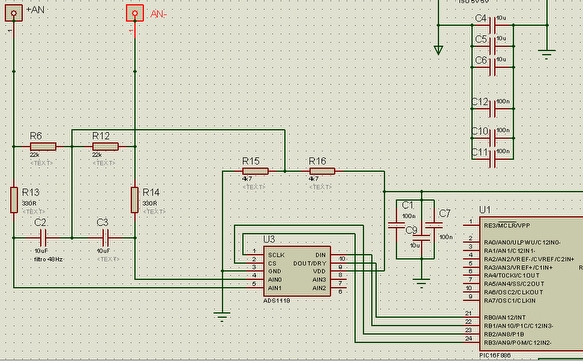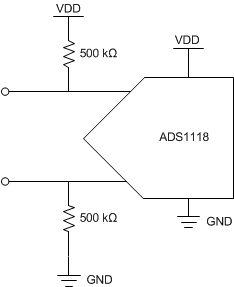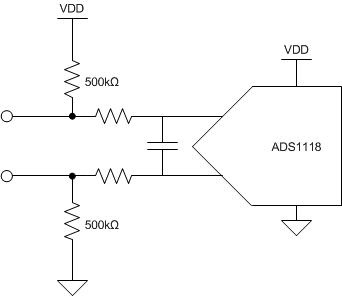I´m having a kind of "latch up" or memory at ADS1118 in the circuit shown below (differential isolated) as follows:
- AN+,AN- =Vdif= 3.5 mV, DC at the multimeter. Test runs for about 2 hours with no problem. Vout at worst is about 200uV over real multimeter. Microcontroller sampling rate is ~58Hz.
- Then I start to change Vdif back and forth manually, thru a resistive divider with a potentiometer (ex: 20mV, 30mV, 10mV, 3.5mV)
- When I stop to change Vdif, some seconds after, Vout goes over Vdif for about 2mV. For example, multimeter shows Vdif=3.5mv but Vout=5.5mV.
- Even if I change Vdif= 15mV, Vout=17mV (no matter Vdif value, Vout is always ~2mV over)
- Even if I turn power off/on for 1 minute, it starts ok, but after some seconds it has the 2mV difference again.
- The circuit is galvanic isolated from anything else, so it´s ""floating". The power supply is isolated, as well the rs485. So, the circuit is "tied" (referenced) only to AN+, AN-, and there is no way to connect ground to AN+, AN- circuit. There is no usable mid point or ground at that circuit.
- -----------
- So, I took out the C2 and C3 (48Hz filter ceramic cap.). About the sameVout/Vdif difference after some seconds
- Then I took out R6, R12. Same problem, but seems that Vout-Vdif =~ 1mV (in fact I took off the 2.5V to "tie" the diferential inputs at the middle of 5V power).
- If I put my finger at ADS1118 VIn+ and VIn- (and maybe other surrounding pins) it "discharges", Vout goin a bit below Vdif. But few senconds later it returns to the same Vdif/Vout difference =~ 1mV
- I din´t the finger test when capacitors and/or R6,R12 where there.
Thanks in advance
Jose Breitinger
ADS1118 register settings:





